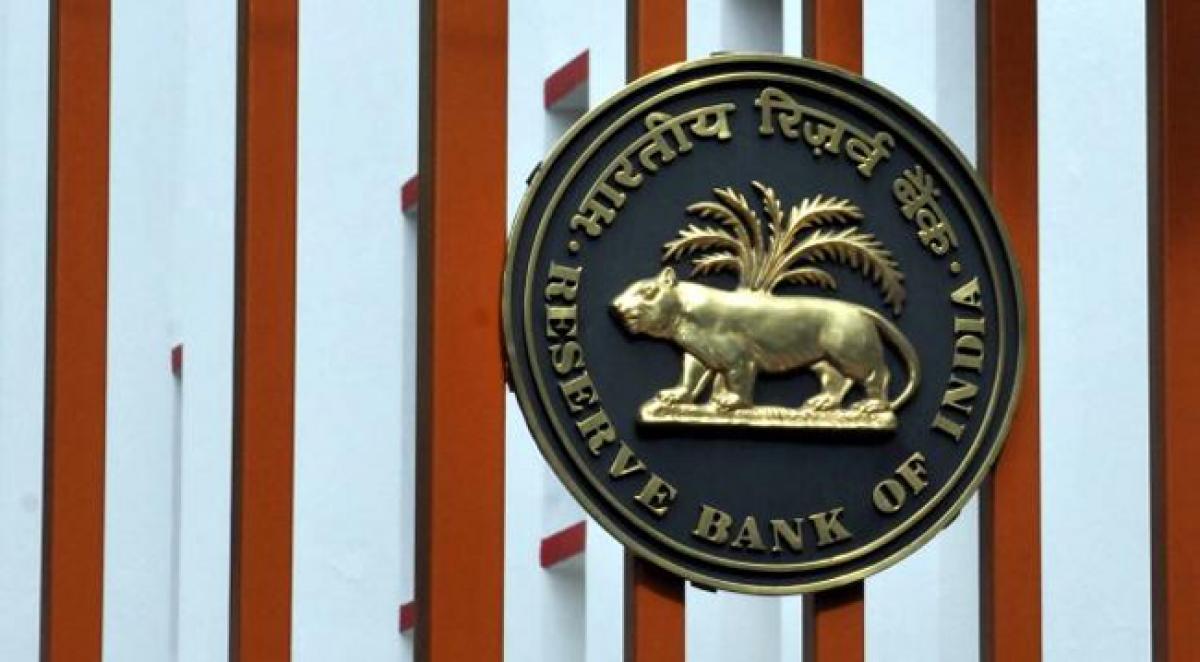Live
- Telangana Government Takes Decision on Reservoir Silt Removal
- Record Cannabis Burn in Telangana: Police Destroy Goods Worth Rs. 37 Crore
- Telangana Govt. Decides to Dredge Reservoirs
- HYDRA Commissioner Visits Ameenpur Municipality
- Chandrababu announces village roads will be constructed similar to National Highways
- Realme GT 7 Pro India Launch: Battery Change, Key Features, and Specifications
- Border-Gavaskar Trophy 2024-25: Do not write off champions, says Nathon Lyon referring to Virat Kohli
- Telegram Mini-Apps Now Run in Full Screen with New Features
- Public hearing on challenges faced by deprived communities in accessing pensions
- Chandrababu Emphasises Importance of Polavaram Project in AP Assembly
Just In

Non-productive expenditure of state governments remain a cause for worry and their growing liabilities need redressal, even though there has been some improvement in this regard, the Reserve Bank of India (RBI) has said in a report.
Non-productive expenditure of state governments remain a cause for worry and their growing liabilities need redressal, even though there has been some improvement in this regard, the Reserve Bank of India (RBI) has said in a report.
"The rising trend in the committed expenditure to gross state domestic product ratio in recent years is a cause for concern," the central bank said in its latest report on state finances, calling for steps to step up the output.
Committed expenditure includes interest payment, pensions and administrative services and is set to rise further upon the implementation of the 7th Central Pay Commission recommendations, which may also have a cascading impact on the salaries and pension burdens on states, the RBI said.
Such expenditure is a major fiscal drain on states and inhibit money for development purposes.
The report said one solution is for states to expand faster than the rate at which such expenses are growing. "Capital outlay must go up significantly. But states are not able to step it up dramatically," Ajitava Raychaudhuri, economist at Jadavpur University, told IANS.
According to the report, states in general raised the average capital outlay to their output by 0.6 percentage points after implementing the steps under fiscal responsibility and budget management from 1.8 percent to 2.4 percent.
"But this is not a significant increase," Raychaudhuri said.
The report said aggregate capital expenditure of states remained almost stagnant over the years as a proportion to the state output. The banking regulator also said states do not sacrifice growth-inducing expenditures within the overall framework of fiscal consolidation.
"Every state has its own comparative advantage. Each state should identify and develop them via its own resources or public-private partnership. This will create more assets and ensure future flow of income," Dipankar Dasgupta, economist at Indian Statistical Institute told IANS.
He said tourism was one such area for West Bengal to create productive assets.
Economists said unless states increase their income, they will continue to rely on borrowings and that again will be used to retire old debt. As a result, debt burden only grows without any sign of increases in the states' gross domestic product or incomes.
"Governance is deteriorating. There is lack of accountability in the system. Someone must oversee states for their unproductive expenditure. Most financing decisions are for political gains," former professor of Delhi School of Economics B.L Pandit told IANS.
"Capital expenditure has multiplier effect on growth. But states are unable to increase it enough to push growth to a higher level. Majority of borrowed money is spent neither efficiently nor on productive purposes. So the debt burden of the states has not reduced much," Pandit added.
The central bank said outstanding liabilities of state governments have experienced double-digit expansion since 2012-13, with steady increase in public debt. "The increase in market borrowings of state governments since 2008-09 entails large repayment obligations from 2017-18 onward."
As on end-March 2016, the outstanding liabilities of West Bengal, for example, stood at Rs.3,088 billion, while for Maharashtra it was Rs.3,793.6 billion. For Uttar Pradesh, it was Rs.3,274.7 billion, Tamil Nadu Rs.2,352.6 billion and Gujarat Rs.2,292.8 billion.
Nonetheless, West Bengal's debt as percentage of its output improved to 35.5 percent in 2015 from 41.9 percent in 2011. As a non-special category state, it is the worst. For Punjab, the ratio improved to 32.4 percent from 33.1 percent, and for Kerala to 28.5 percent from 31.8 percent.
At the same time, the report said the fiscal health of states deteriorated in 2013-14 with their consolidated revenues turning into deficit after three years. It further weakened in 2014-15, as gross fiscal deficit and primary deficit also increased as proportions to state output.
But the central bank had a ray of hope. "The overall fiscal performance of states is expected to improve with the revenue account turning back to surplus. Such improvement, if sustained, would reduce the debt burden of states."

© 2024 Hyderabad Media House Limited/The Hans India. All rights reserved. Powered by hocalwire.com







